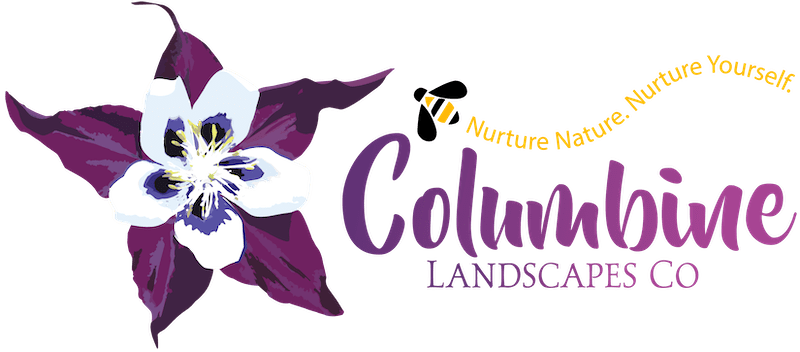01 Nov Pollinator Friendly Lawns
The standard Kentucky Bluegrass (KBG) lawn can stand up to a lot of foot traffic, and a lot of water. In fact, many lawns are commonly significantly overwatered even here in the arid southwest. I can’t tell you how many times I’ve walked across a clients’ lawn and heard the telltale squish of flooded turfgrass – even during drought. It’s hard to stomach. Especially when it’s been proven that KGB is a surprisingly drought tolerant species. For more info on what your traditional lawn can survive, check out this article from CSU.
If they can take significantly less water than most of us knew, are there other good reasons to replace KBG lawns? My answer is a resounding YES, and can be summed up with one word: pollinators. Grass is wind pollinated, which means it does nothing to support pollinator populations. Replacing your grass lawn with a flowering alternative is a step in the right direction for nurturing your local ecosystem.
Another huge reason to make the transition is to cut down on fossil fuel use and spend your precious time doing something more fulfilling than mowing the lawn. This is a terrific article on America’s obsession with lawns and why we need to shift beyond it.
Yarrow Lawn
Achillea millefolium, commonly known as yarrow, is currently my favorite alternative lawn species for a number of reasons.
- It’s a native species across the entire continent and around the globe.
- It supports a diverse array of pollinator insects including butterflies and bees.
- There is a stunning array of flower colors from yellow to pink to red and orange as well as the classic white to beautify your landscape.
- It naturally spreads which makes it an effective groundcover, outcompeting many weeds.
- It requires far less water than KBG and is green throughout the growing season.
- Mowing is not necessary, although can be done after flowering for a tidy appearance.
- It tolerates dry, clay, and compacted soils and easily thrives in our climate without requiring amendments.
Yarrow lawn in flower next to traditional lawn

Yarrow lawn that was weedwhacked after flowering

Catmint Lawn
Catmint varieties that reseed can be annoying in the general landscape, but just what is needed to fill in a space and cover the ground. Here are some of the attributes making catmint a great lawn alternative:
- Adapted to our climate and soils.
- Xeric, meaning adapted to dry, requiring little supplemental water once established.
- Attractive flowers that feed the bees.
- Cutting back (weed whacking) the flowers as they finish blooming. brings on subsequent blooming all season long.
Catmint in full bloom

There are other worthy lawn alternatives for our area which I’ll cover another time. For now, I’m glad I could introduce you to the ones I’m most excited about and hope that I’ve wet your palate to give your landscape pizzazz and new life.
To the glory of the garden! Eva
Eva Montane, certified Landscape Designer & President of Columbine Landscapes Co

Sorry, the comment form is closed at this time.